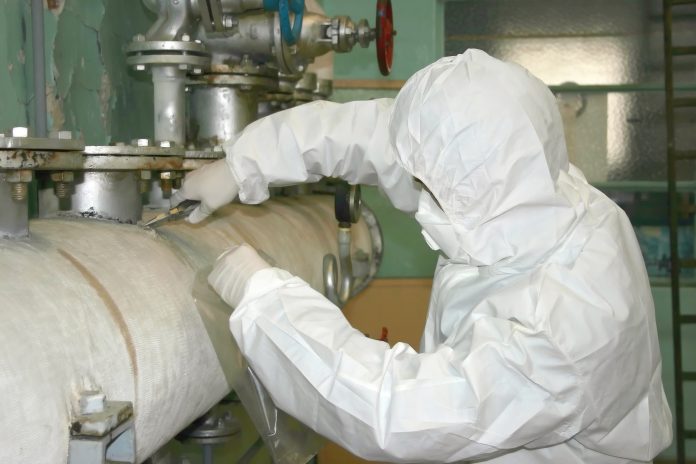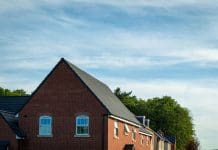HSE guidelines state that no asbestos fibrous minerals should be contained within commercial and non-domestic buildings constructed after the year 2000. But what is the recommended course of action when asbestos is discovered within post-2000 buildings?
According to recent research, of the six million tonnes of asbestos imported into the UK, a substantial amount still remains in an estimated 1.5 million commercial buildings, as well as in over 2m private domestic properties.
While the majority of these will be buildings constructed prior to the Asbestos Prohibition (Amendment) Regulations 1999 ban, there have been many occasions where asbestos will have been physically transported onto post-2000 premises unbeknownst to the inhabitants.
Despite the legislation prohibiting the supply and usage of ACMs, there was, in fact, a loophole that excluded materials that were already in use prior to the ban being enforced.
As a result, existing stocks of materials and products containing the fibrous mineral were permitted to remain active until they reached the end of their service life, and exemptions on the use of chrysotile were still in place until as late as 2005.
As the ban did not legally mandate the removal and eradication of asbestos-containing products, it is easy to presume that such materials that were well within their service life could easily have been transported into properties constructed after the year 2000.
There have also been cases where stockpiled ACMs have been used throughout the construction supply chain, particularly when taking importation legislation into account.
British law states that all imports coming into the UK should be declared 100% free from asbestos; however, the declaration level outside of the UK varies considerably. Across Europe, the asbestos-free level is 0.1%, the USA at 1% and less than 10% across parts of Asia, meaning that there is room for error for ACMs to be imported in the UK.
Where can asbestos be found?
Renowned for its insulating, heat resistant and strengthening properties, asbestos was commonly used within a range of different construction materials in the late 20th century, including roofing, sprayed and textured coatings, insulation materials, ceiling and wall panels, cladding, floor and roof tiles, textiles, soffits, water tanks, pipe lagging and gutters. Its versatility meant that it could be found in a range of locations within a building, from airing cupboards and fuse boxes to fireplaces and boilers.
Asbestos insulation board and cement also featured heavily in common household objects in the late 20th century, having been incorporated into such products as hairdryers, safes, dishwashers, ovens, washing machines, toasters and ironing boards.
The fibrous mineral has also been discovered in more unusual objects over the years, including make-up, toilet seats, jewellery, cameras, radios, crayons, books, toys and even talcum powder. Collectors of antiques are required to proceed with caution when bringing these goods onto the premises, as this is yet another way in which asbestos can be discovered within a post-2000 property.
Post-2000 discoveries – examples from SOCOTEC’s asbestos team
Over the years, members of SOCOTEC’s Asbestos team have uncovered the fibrous mineral on a wide range of premises constructed after the nationwide ban. It is extremely common for older plant and equipment to be transferred into ‘newer’ buildings, either due to the fact that it is asbestos-containing or it has been brought in from a site surrounded by the hazardous fibres.
This was the case in a UK prison surveyed in the early 2000s, which was found to be asbestos-containing following the discovery of plant that had been transferred from an older building containing asbestos gaskets.
Similarly, an old factory site full of asbestos was closed and relocated to a brand new, purpose-built facility constructed in 2004. As this was built after the ban, it was presumed that no ACMs were used within the construction materials, with no asbestos reinspection required. However, a group of old industrial ovens were transferred from the older site and into the new factory, all of which were asbestos-containing.
As aforementioned, stockpiled construction materials have often been the cause of newer buildings being contaminated with asbestos fibres. Due to the fact that the 1999 legislation allowed asbestos-containing materials to be used until the end of their service life, it was common practice for builders to hold onto these or salvaging them from damaged or demolished structures to be used again.
This was the case during an asbestos survey of a school in 2002, where a surveyor noticed that the contractor was re-roofing the veranda using asbestos-containing tiles.
Recommended actions
The general rule of thumb for duty holders or owners of buildings constructed after the year 2000 is to presume that there will be no asbestos located on the premises. However, it is still good practice to remain vigilant about the possibility of the fibrous mineral being present, such as within old electrical equipment that has been transported into the building, or if post-2000 premises are built on existing basements or linked to adjoining structures.
Legislation and HSE guidance currently recommends that an asbestos-containing material can be left if it is in good condition and unlikely to be disturbed or damaged, as it is only harmful to health when fibres are released into the atmosphere.
However, if the material is presenting signs of ageing, damage and/or deterioration, or if repairs or refurbishment are to take place on or near to the material, it is recommended that you call in a suitably trained individual to survey the level of risk and recommend remedial action.


















I have rarely seen ACMs present in houses and commercial buildings from the mid to late 90s.